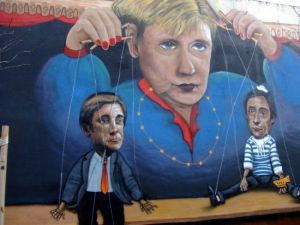
Graffiti, as defined in Ricardo Campos’ article Struggles on the walls: Political Graffiti in Portugal, is a form ” of vernacular expression” which is usually ” satirical and include oppositional messages”. Graffiti is used as a method of communication, spreading messages to a larger audience, but keeping the artist anonymous. However, the intended audience is not always clear, leaving some of the meaning behind the piece up to the imagination.
All street art however, is not created equally. There are several different forms that graffiti takes all around the world depending on the region. While there used to be separate styles for Europe (poetic and political) and America (pop culture), they have started to blend together more in one particular country, Portugal. This introduction of the North American style of graffiti allows for a common “language” to be spread across the world. In Portugal however, graffiti has a deeper roots. Propaganda has had implications all throughout the history of the country. In recent years there has been a resurgence in politically minded graffiti all around the country. These pieces of street art can be seen as “informal political expression” of the populous of the country. They are, as Campos writes “words, slogans, spray-painted murals and stencil techniques are among the forms of protest that run through the streets of Lisbon today.”
How does graffiti in Portugal effect us in the United States? Art as a way of political and cultural expression is very prevalent throughout our culture. Through political cartoons in newspapers, and our own graffiti on the spaces around us, the United States has embodied some of the same ideas as Portugal. Graffiti is another form of artistic expression, like that of the rappers from Hip Hop: Beyond Beats and Rhymes. The way that they present their ideas and ideals about what music should look like says something about their mindset, in much the same way as these graffiti artist use their art to portray their ideas and ideals about politics. While these are two differing styles of art, they both showcase the inequalities in a population. However, hip hop doesn’t seem to be fighting it’s inequalities, but instead embraces them as part of it’s culture. Political graffiti both in the United States and Portugal are working towards closing the gap of inequality through their art. As Campos stated at the end of Struggles on the walls: “the walls of Portugal appear to increasingly serve the purpose of expressing not only a widespread revolt, but also of stoking political power, satirizing the ruling class, and defying the status quo.”

You must be logged in to post a comment.